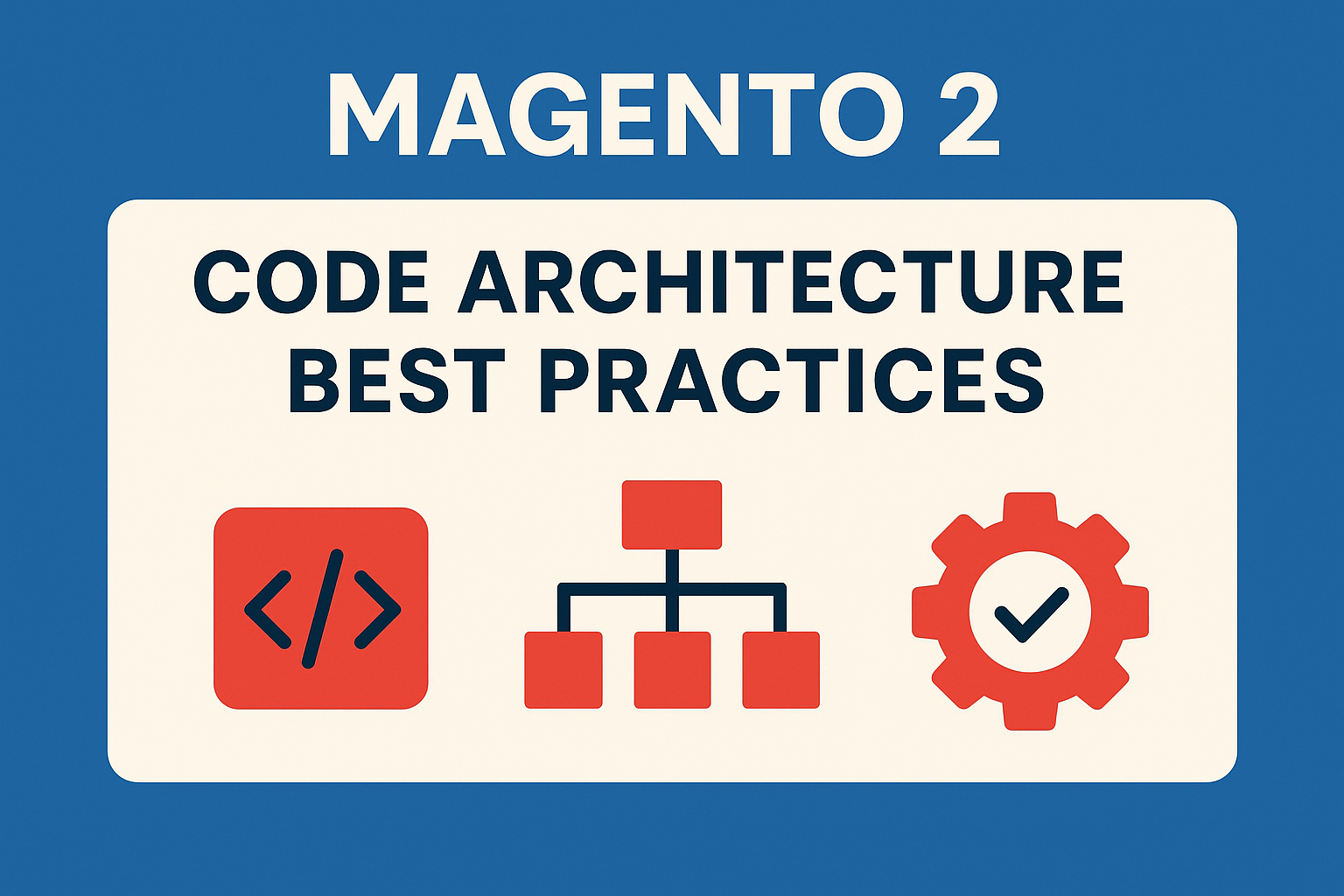Magento 2 Code Architecture Best Practices
Follow Magento 2 code architecture best practices to build clean, modular, scalable eCommerce solutions that are easy to test, extend, and maintain.

Table of Contents
Magento 2 supports both REST and GraphQL APIs. Choosing between them depends not only on the client type but also on how your integration needs to behave under load, change, and scale.
REST is ideal for:
Example: An ERP system pushing a batch of product inventory updates via the /V1/products/{sku}/stockItems/{itemId} endpoint can rely on stable field formats and consistent behavior.
GraphQL is better suited for:
Example: A storefront requesting cart contents, available shipping methods, and payment options in a single query without chaining multiple REST calls.
Integration Tip: Use REST for external system communication and GraphQL for UI interactions—especially where frontend performance matters.
Explore Magento development services that support robust integration strategies.
Magento’s event system allows for loosely coupled communication between modules and services, making it an excellent tool for custom integration triggers.
Common use cases:
customer_register_success);sales_order_save_after);catalog_product_save_after).Benefits:
Implementation Guidelines:
Observers are best for reactive logic that does not require immediate confirmation (e.g., background tasks or queued actions). For real-time APIs, use service contracts or synchronous integrations instead.
Learn more about Magento support strategies that leverage event-driven architecture for stability and extensibility.
If you're moving to a headless architecture with a custom frontend (React, Vue, or Svelte), Magento becomes the backend service layer. This shifts the integration responsibility into three primary areas:
Magento’s GraphQL coverage includes products, categories, checkout, customer sessions, and more. However:
Frontend applications must manage customer authentication tokens (generateCustomerToken) and use masked cart IDs to maintain session continuity.
The standard Magento checkout logic (e.g., setting addresses, selecting shipping and payment methods, placing the order) must be replicated in sequence via GraphQL mutations. Each step becomes an integration point the frontend must handle explicitly.
Best Practices:
Going headless isn't just a UI decision—it deeply changes how integration logic is distributed between systems and teams.
For guidance on platform architecture, read our post on aligning platform strategy with business growth.
As the number of systems integrated with Magento grows, so does the complexity of managing those connections. Ensure integrations remain healthy by adopting:
Magento_MessageQueue, RabbitMQ, or custom CRON-based processors);If you're evaluating how integration fits into broader technical decisions, our eCommerce platform flexibility guide offers insight into designing systems that can evolve over time.
Integrations should serve the business—not become its operational risk. By using Magento’s extensibility tools carefully, and matching REST, GraphQL, and event-driven patterns to the right use cases, technical managers can build systems that scale, evolve, and remain maintainable across changing requirements.
Magento is not just an eCommerce platform—it’s an integration platform. Architect it as such.

Follow Magento 2 code architecture best practices to build clean, modular, scalable eCommerce solutions that are easy to test, extend, and maintain.

Use these magento inventory management extensions to increase efficiency and fuel a more seamless customer experience.

Unlock the full potential of your Magento store with our guide to integrations. From payments to logistics, find the right integrations for your store.